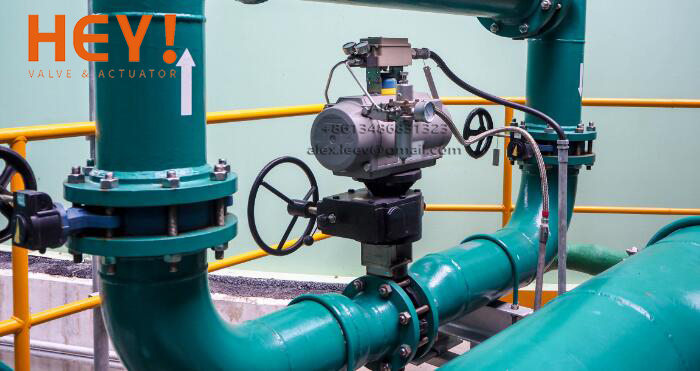The world of fluid control has witnessed a remarkable advancement with the emergence of pneumatic butterfly valves. These innovative valves are revolutionizing industries by offering exceptional efficiency, precise control, and reliable performance. Their versatile design and superior functionality are reshaping the landscape of fluid management systems.
Pneumatic butterfly valves are quarter-turn valves that utilize a pneumatic actuator to regulate the flow of liquids or gases. These valves feature a disc-shaped closure element, referred to as a butterfly, which rotates within the valve body to control the fluid flow. The pneumatic actuator provides the necessary force to operate the valve, offering remote control and automation capabilities.
The primary advantage of pneumatic butterfly valves lies in their ability to deliver precise flow control. The rotational motion of the disc allows for quick and efficient opening and closing, enabling precise adjustments of flow rates and pressures. This level of control ensures optimal performance and process stability in various industrial applications.
Industries such as water treatment, chemical processing, HVAC, food and beverage, and pharmaceuticals have embraced the benefits of pneumatic butterfly valves. Their ability to handle a wide range of flow rates, pressures, and temperatures makes them suitable for diverse operating conditions. Furthermore, their compact design and ease of installation have made them a popular choice in space-constrained environments.
One of the key features that sets pneumatic butterfly valves apart is their reliability and durability. The simplicity of their design, with fewer moving parts compared to other valve types, results in reduced maintenance requirements and enhanced longevity. The absence of complex mechanical linkages minimizes the risk of failure and ensures consistent performance over time, even in demanding industrial environments.
Automation is a crucial aspect of modern industries, and pneumatic butterfly valves excel in this regard. By integrating with control systems, these valves can be operated remotely, programmed for specific flow conditions, or synchronized with other process components. This automation capability improves operational efficiency, reduces labor costs, and allows for seamless integration into overall process control systems.
Energy efficiency is a pressing concern in today’s industrial landscape, and pneumatic butterfly valves contribute to sustainability goals. Their quick opening and closing action minimizes pressure drops, reducing energy consumption and optimizing system performance. Additionally, the use of pneumatic actuators eliminates the need for continuous energy supply, further enhancing energy efficiency.
Pneumatic butterfly valves are available in a wide range of sizes, materials, and configurations to cater to diverse application requirements. Materials such as stainless steel, carbon steel, and PVC are commonly used, ensuring compatibility with various fluids and environmental conditions. The valves can also be equipped with different types of seals, including elastomers and metal-to-metal, to suit specific media and operating temperatures.
Leading manufacturers are investing in research and development to enhance the capabilities of pneumatic butterfly valves. This includes advancements in valve design, actuator technology, and control systems integration. The integration of smart features, such as position sensing, remote monitoring, and diagnostic capabilities, further enhances the reliability and functionality of these valves.

In conclusion, pneumatic butterfly valves are revolutionizing fluid control by offering precise regulation, reliability, and automation capabilities. Their ability to optimize processes, reduce maintenance efforts, and contribute to energy efficiency has made them indispensable in various industries. As technology continues to evolve, pneumatic butterfly valves are poised to play a pivotal role in driving efficiency and reliability in fluid management systems.
Post time: Jun-27-2023
